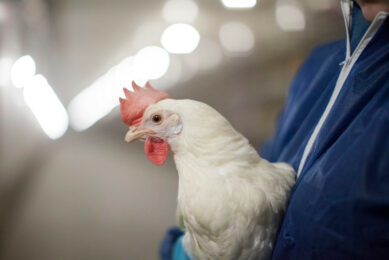Inositol production critical to phytase superdosing response

According to the latest research, up to 30% of the performance response seen in broilers following phytase superdosing may be due to the beneficial effects of the inositol released following complete phytate degradation.
Inositol is produced when all six of the phosphate (P) ions contained within phytate, otherwise known as inositol hexaphosphate (IP6), have been stripped away by the combined action of phytase and endogenous phosphatases. The resulting inositol appears critical to successful superdosing, and its production relies heavily on achieving greater than 85% destruction of both phytate and its lower esters (IP5 through to IP1), claims Dr Mike Bedford, AB Vista’s Research Director.
“The growth-promoting effects of inositol in chicks have been recognised since the 1940s,” he states. “Inositol is known to have important metabolic roles, such as in fat metabolism and cell function, as well as being combined with phosphorus at a cellular level to recreate phytate, which is a potent anti-oxidant.
“What we have now been able to show is that inositol accounts for around 30% of the improvement in feed conversion ratio (FCR) seen in broilers when superdosing with a new generation E.coli phytase*, regardless of whether the diet is deficient in P or not.”
Targeting the necessary level of phytate destruction, and subsequent inositol production, is therefore vital. It also puts a strong focus on the phytase characteristics needed to achieve that goal, according to Dr Bedford.
“A high rate of activity at the low pH found in the stomach is critical, as is an ability to continue phytate breakdown even when concentrations are low, to maximise phytate destruction,” he highlights.
“It is also important the phytase can survive high temperature feed processing without the need for coating, which may slow the onset of activity in the stomach, and be able to withstand the bird’s own digestive enzymes long enough to be effective.”
* Quantum Blue











